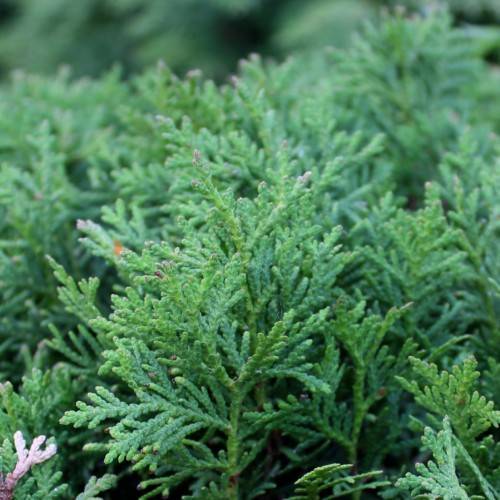
American arborvitae
Thuja occidentalis 'Ericoides'
Cycle:
Perennial
Watering:
Average
Hardiness Zone:
2 - 7
Flowers:
Flowers In Spring
Sun:
Full sun, Part sun/part shade
Soil:
Sandy Loamy Clay Rocky
Cones:
Yes
Leaf:
Yes
Growth Rate:
Moderate
Maintenance:
Low
Drought Tolerant:
Yes
Care Level:
Low
watering
American arborvitae should be watered once each week during its active growing season, in spring and summer. During this time, plants should be watered deeply, so that the soil is moist to a depth of at least 18-24 inches. In general, plants should be given 1-2 inches of water per week, either from rainfall, irrigation, or a combination of both. During colder months when the plant is dormant, water less often, providing just enough moisture to keep the plant's root system from drying out.
sunlight
American arborvitae prefers full sun to partial shade for ideal growth and foliage density. This species does best when it receives at least 6 or 7 hours of direct sunlight per day, with a preference for mornings. In warm climates, late afternoon may provide too much sunlight and may result in wilting or scorching of the foliage.
pruning
American arborvitae (Thuja occidentalis 'Ericoides’) is best pruned in early summer and late winter when it is in a state of dormancy. Pruning in the spring or summer months may cause damage to existing foliage, as the new growth is delicate at this point in the season. Pruning should be done to remove dead and diseased branches, or to train the plant’s growth by limiting the overall size. A light pruning can also help to maintain the plants natural form, though American arborvitae are naturally symmetrical and conical shaped. If more extensive pruning is needed, it is best done over a few years by removing no more than 1 third of the plant each year.
